Japanese Sukiyaki Sauce (Warishita)
Sukiyaki sauce is sweet, savoury and utterly delicious. Use it as a cooking sauce for a Japanese hot pot dish, the traditional way. Or add it liberally to saucy noodle dishes, stir-fries and Japanese steamed rice bowls.
A mix of sukiyaki sauce and dashi broth creates the braising liquid for sukiyaki, a traditional Japanese hot pot dish. The sauce is sweet, savoury and packed with umami flavour.
Hot pot dishes, called nabemono, are ubiquitous in Japanese cuisine. Keep reading to learn how to make sukiyaki, or jump straight to the sukiyaki sauce recipe.
Don’t confuse Japanese sukiyaki sauce with the Lao sauce of the same name. The two Asian sukiyaki sauces use very different ingredients.
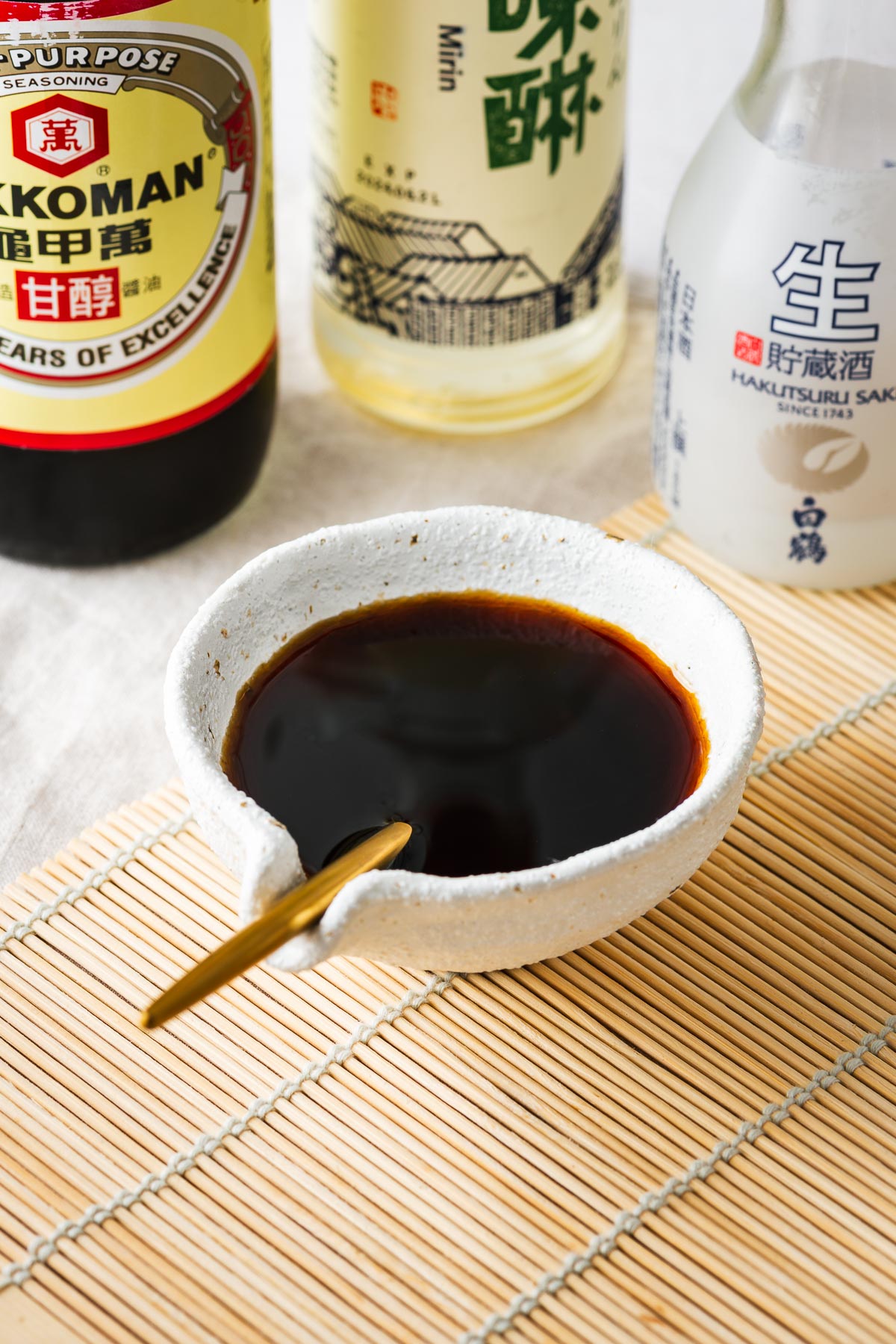
What is sukiyaki?
Sukiyaki is a Japanese winter dish of meat and vegetables stewed tableside in a mix of dashi broth and sukiyaki sauce (also called warishita). The sukiyaki sauce has only four ingredients: soy sauce, sake, mirin and sugar.
The hot pot is prepared and served in a cast iron pot as a casserole-style dish. And a raw egg dip accompanies the Japanese dish.
Shabu-shabu is another popular Japanese hot pot dish.
Sukiyaki vs shabu-shabu
Sukiyaki and shabu-shabu are two popular Japanese hot pot dishes cooked and enjoyed tableside. The main difference is the cooking sauce and accompaniments.
For sukiyaki, the thinly sliced beef and vegetables cook in a sweet soy sauce broth of sukiyaki sauce and dashi broth. A raw egg dip accompanies the hot pot.
And with shabu-shabu, meat and vegetables boiled in kombu dashi get dipped in sauces like goma dare (Japanese sesame sauce) and ponzu sauce.
Types of sukiyaki
Different regions have different ways of preparing sukiyaki, but there are two main styles. The Kanto style is from eastern Japan, and the Kansai style is from western Japan.
In the Kanto style, all the sukiyaki ingredients (beef slices, tofu and vegetables) cook together in the simmering sukiyaki sauce.
With Kansai sukiyaki, the meat gets seared separately with brown sugar. The sukiyaki sauce gets added to the almost-cooked meat. And lastly, vegetables and other ingredients get included.
For both Kanto and Kansai sukiyaki styles, wheat noodles or mochi can be served at the end of the sukiyaki meal to soak up the remaining sukiyaki broth.
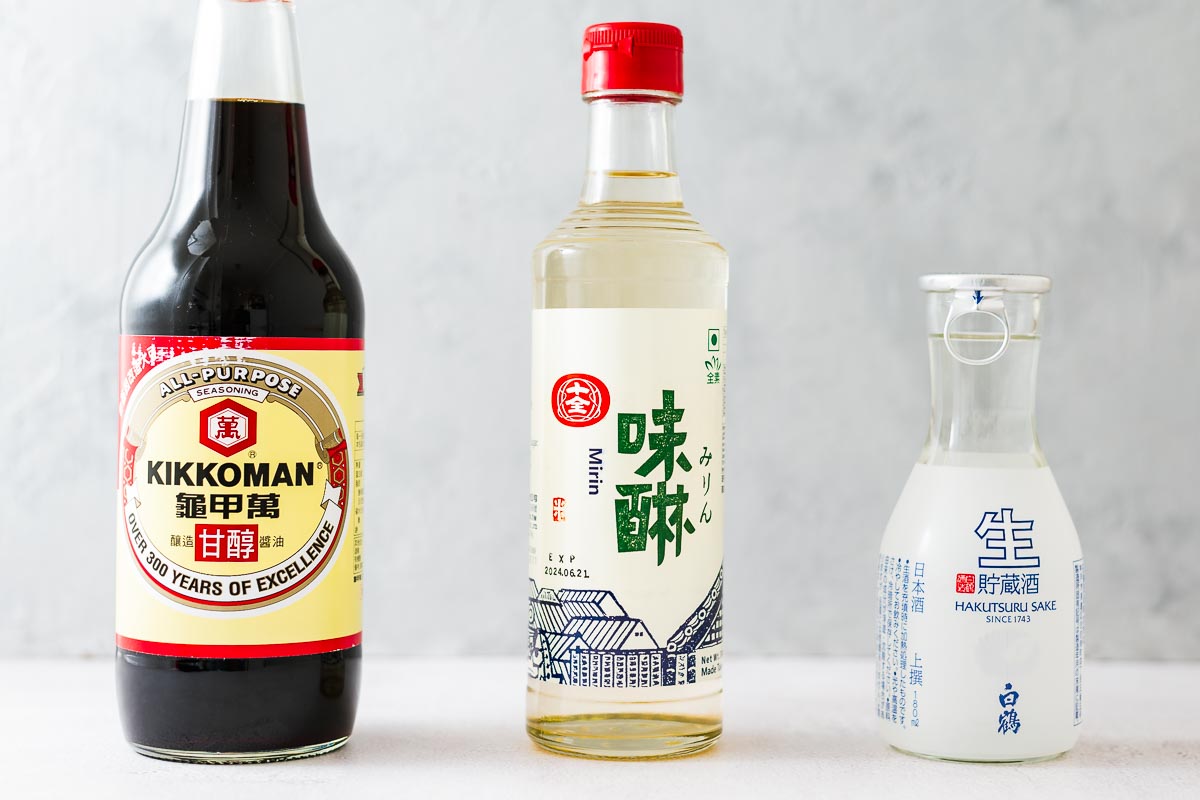
Sukiyaki sauce ingredients
This sukiyaki sauce recipe only requires four ingredients. And they are ingredients I always have around. So a sukiyaki-inspired noodle bowl needs only a moment’s notice.
Warishita sauce is sweet, savoury and packed with umami. You should find all the ingredients in an Asian grocery store, but you can even try your local grocery store. If all else fails, you can try online.
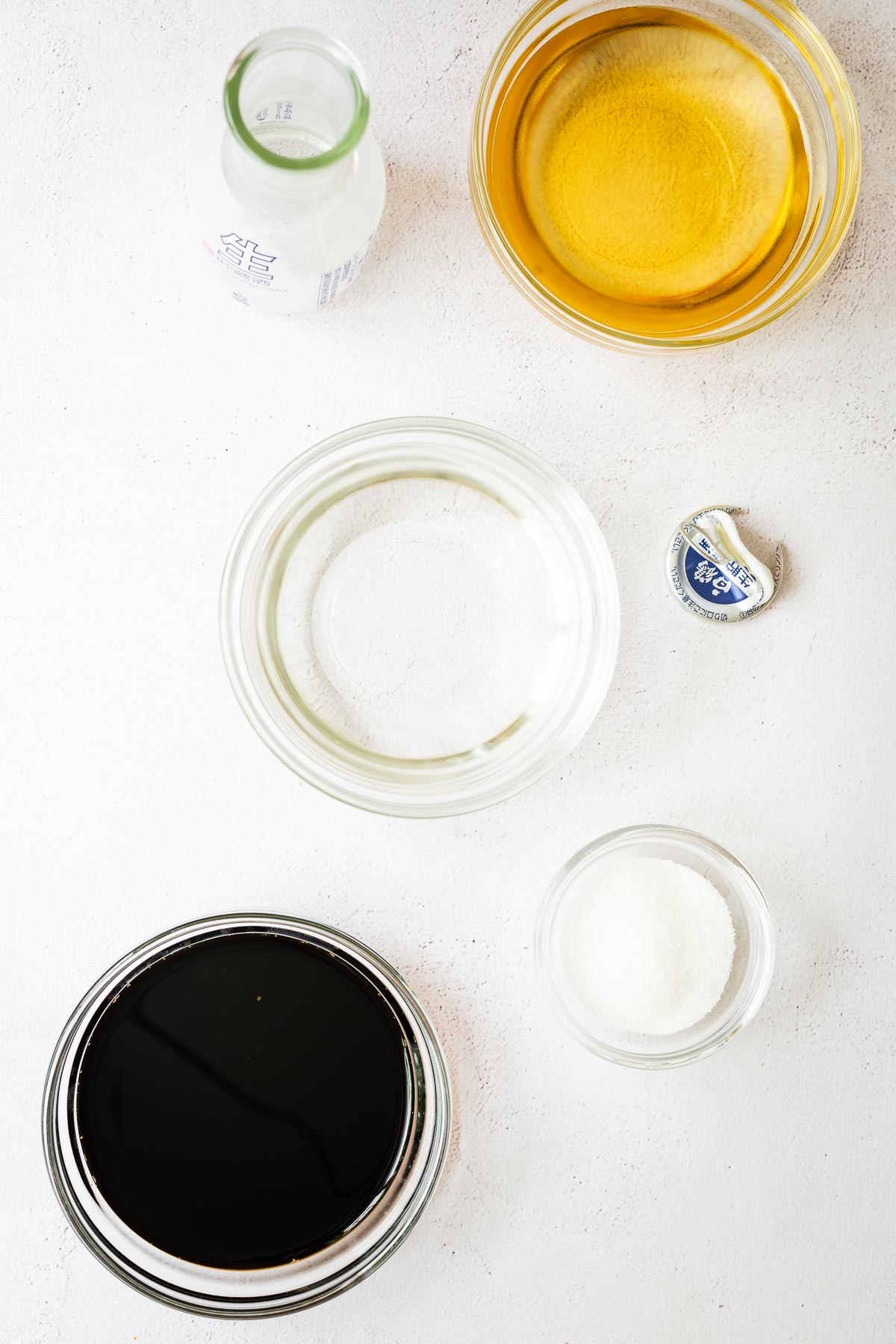
The ingredients you’ll need are:
- Soy sauce: I use all-purpose Kikkoman soy sauce. But you can also use tamari (or another alternative) if you need a gluten-free sukiyaki sauce.
- Sake: This popular rice wine is a traditional ingredient in sukiyaki sauce. But if you can’t get your hands on any sake or cooking sake, you can omit it and instead combine equal parts soy sauce and mirin (without the brown sugar).
- Mirin: Mirin is a naturally sweet rice wine with a lower alcohol content than sake. If you can’t find any, you can omit it and use equal parts soy sauce and sake. Double the sugar in the recipe (or sugar alternative) to replace the sweetness of mirin.
- Sugar: I use granulated white sugar, but you can use light brown sugar too. Or use your favourite sugar alternative, like maple syrup or brown rice syrup.
You can also buy ready-made sukiyaki sauce in Asian grocery stores or online, like Kikkoman sukiyaki sauce. But it’s really so easy to make at home. I always prefer to make my own sauce if all it requires are some pantry staples.
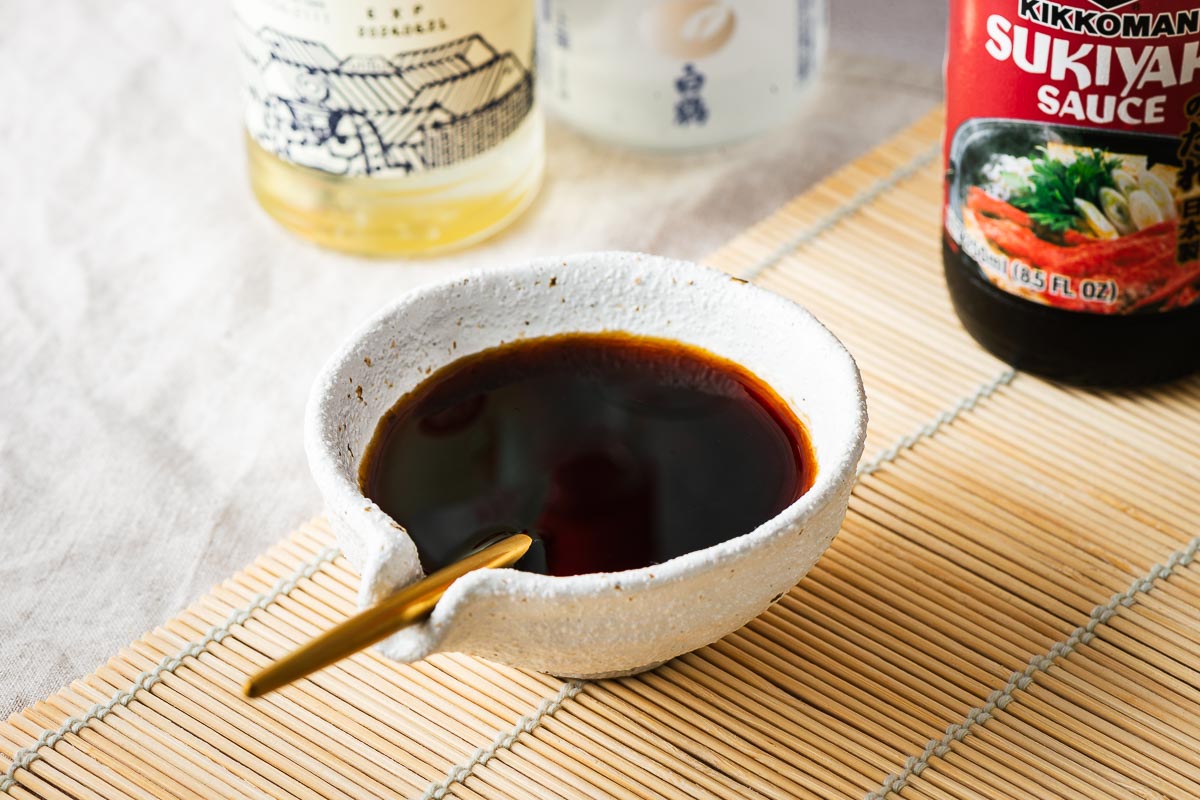
How to make sukiyaki sauce
Sukiyaki sauce is super simple to make at home.
Grab a small saucepan and add equal parts soy sauce, sake and mirin. Add one tablespoon of sugar for every third cup of soy sauce.
Bring the sauce to a light boil and stir until the sugar dissolves.
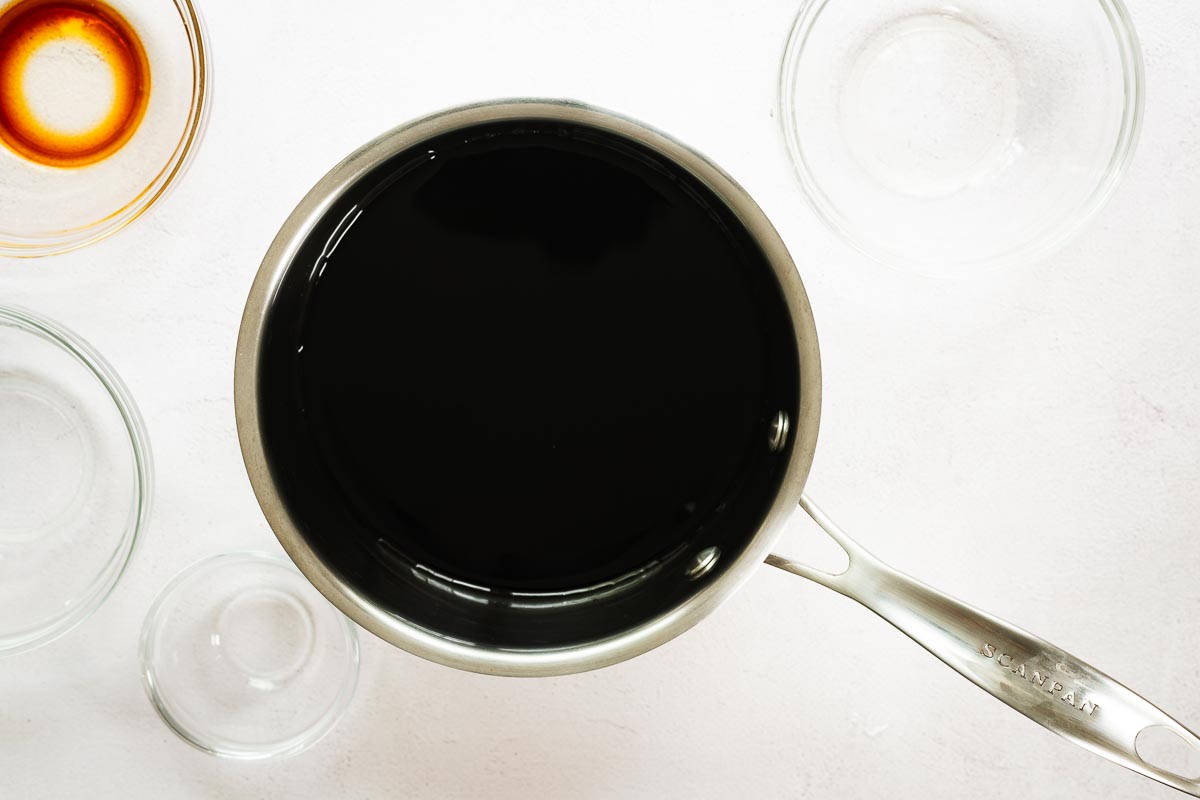
It’s that simple.
You can even heat the sauce ingredients in the microwave in a glass bowl.
Once cooled, you can keep the sukiyaki sauce refrigerated in an airtight container for up to one month.
Use it for authentic sukiyaki or add it to noodle dishes, soups and stir-fries.
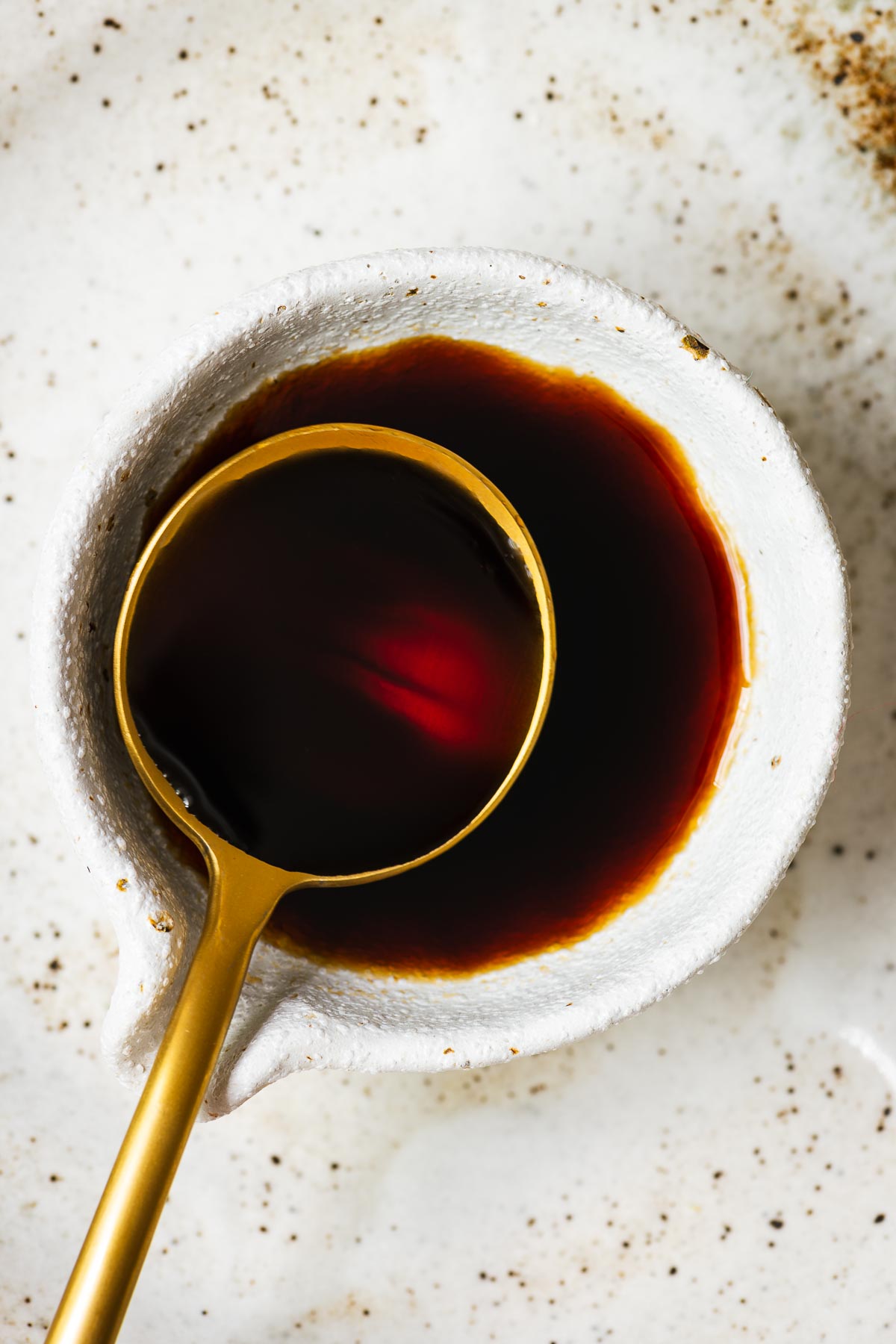
How to make sukiyaki (Kanto style)
This is less of a sukiyaki recipe and more of a sukiyaki instruction set to go with your sukiyaki sauce. Use it as a guideline to mix your own Japanese-style hot pot.
While thin slices of beef are a traditional main ingredient, you can stick to only veggies, mushrooms and tofu for vegan sukiyaki.
Set up a portable stove or electric hot plate in the middle of the dining table. Heat two cups of sukiyaki sauce with one and a half cups of dashi stock (or vegetable broth with an optional piece of kombu) in a shallow cast iron pot.
Add sukiyaki ingredients to the simmering sukiyaki broth, such as:
- thinly sliced beef (omit for vegan sukiyaki)
- firm tofu, cut into cubes
- sliced shiitake mushrooms or enoki mushrooms
- long green onion (negi) cut diagonally (or pieces of normal green onions)
- Chinese cabbage (Napa cabbage)
- bok choy or leafy greens
- bunches chrysanthemum leaves (shungiku)
- rinsed and drained shirataki noodles (glass noodles or yam noodles)
Cook everything tableside until it reaches your desired doneness. Keep the hot pot warm over low heat.
Divide steamed white rice among small bowls and pick cooked sukiyaki ingredients from the broth into the rice bowls.
Find instructions for stovetop Japanese rice or instant pot Japanese rice.
It is traditional to serve sukiyaki with bowls of beaten raw egg as a dipping sauce for steaming hot cooked ingredients. Omit the eggs for vegan sukiyaki, or if you don’t feel comfortable eating eggs raw.
At the end of the meal, when most of the ingredients have disappeared, heat cooked udon noodles in the remaining broth. Enjoy your brothy udon noodles to end the meal.
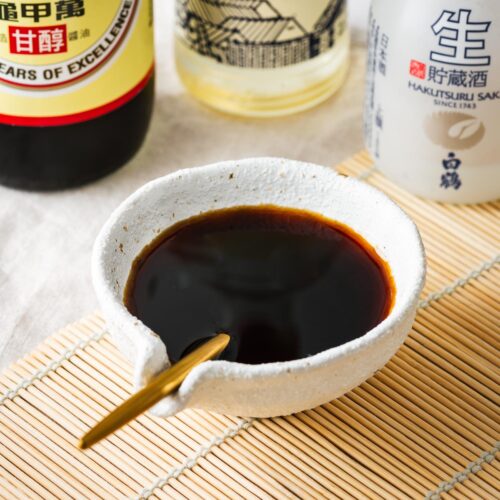
Ingredients
- ⅔ cup mirin
- ⅔ cup sake
- ⅔ cup soy sauce
- 2 tablespoons sugar
Instructions
- Place all of the ingredients in a small saucepan and bring to a boil over medium heat.
- Stir until the sugar dissolves. Remove from the heat and set it aside until needed. Or refrigerate the sukiyaki sauce in an airtight container for up to one month.
Notes
Try more Japanese sauces & Asian condiments:

I don’t have dashi broth, can I use water?
Also is it ok to use nigori sake?
Thank you! Can’t wait to try this (I have all other ingredients, lol) !!!!
Hi Joyce! You can absolutely use Nigori sake – it will result in a slightly creamier and sweeter sauce. Dashi broth would be the traditional choice, but you can substitute it with water. Or try vegetable (or chicken) stock for a flavour boost. Happy cooking! :-)
Yum yum yum! Loved it!
Thanks, Sarah! I’m so happy to hear you enjoyed the sukiyaki sauce recipe!